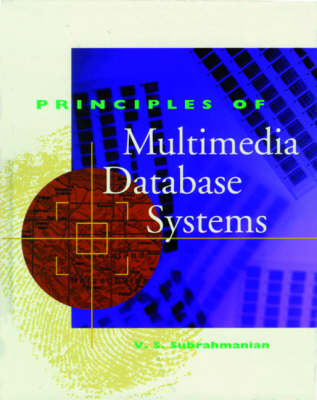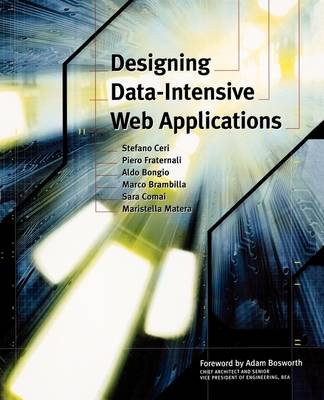The Morgan Kaufmann Series in Data Management Systems
5 total works
Advanced Database Systems
by Carlo Zaniolo, Stefano Ceri, Christos Faloutsos, Richard T. Snodgrass, V.S. Subrahmanian, and Roberto Zicari
Published 1 May 1997
The database field has experienced a rapid and incessant growth since the development of relational databases. The progress in database systems and applications has produced a diverse landscape of specialized technology
areas that have often become the exclusive domain of research specialists. Examples include active databases, temporal databases, object-oriented databases, deductive databases, imprecise reasoning and queries, and multimedia information systems. This book provides a systematic introduction to and an in-depth treatment of these advanced database areas. It supplies practitioners and researchers with authoritative coverage of
recent technological advances that are shaping the future of commercial database systems and intelligent information systems.
Advanced Database Systems was written by a team of six leading specialists who have made significant contributions to the development of the technology areas covered in the book. Benefiting from the authors' long experience teaching graduate and professional courses, this book is designed to provide a gradual introduction to advanced research topics and includes many examples and exercises to support its use for individual study, desk reference, and graduate classroom teaching.
areas that have often become the exclusive domain of research specialists. Examples include active databases, temporal databases, object-oriented databases, deductive databases, imprecise reasoning and queries, and multimedia information systems. This book provides a systematic introduction to and an in-depth treatment of these advanced database areas. It supplies practitioners and researchers with authoritative coverage of
recent technological advances that are shaping the future of commercial database systems and intelligent information systems.
Advanced Database Systems was written by a team of six leading specialists who have made significant contributions to the development of the technology areas covered in the book. Benefiting from the authors' long experience teaching graduate and professional courses, this book is designed to provide a gradual introduction to advanced research topics and includes many examples and exercises to support its use for individual study, desk reference, and graduate classroom teaching.
Principles of Multimedia Database Systems, Second Edition
by V.S. Subrahmanian
Published 1 December 2012
The last decade has seen an incredible proliferation of multimedia data: every news organization now has vast stores of media data ranging from photographs to video clips to audio segments. In addition, as many companies and organizations (e.g. the National Archives) move from a "paper" medium to a "digital" medium, they are increasingly digitizing their paperwork, leading to a vast array of multimedia data. Museums are routinely and regularly producing multimedia presentations of their collections. As the cost of computer storage decreases, more and more organizations are storing an array of multimedia data - these include recordings of meetings and talks, surveillance video, Powerpoint slides, and many others.
This book treats video, audio, image, and text databases and their combinations, and teaches all about the building, storage, manipulation, and information retrieval of them all--with the state of the art technology in mind.
This book treats video, audio, image, and text databases and their combinations, and teaches all about the building, storage, manipulation, and information retrieval of them all--with the state of the art technology in mind.
Multimedia Database Systems (MDBs) facilitate the access, manipulation, and communication of information across high-speed electronic and phone networks. This text defines and explains the technology for the key functions that MDBs must support. It includes important topics including how to organize data types, storage and retrieval, and creation and delivery of multimedia presentations.
Showing professional SQL programmers how to effectively develop applications that involve time-oriented data and queries, this book covers such areas as: how to best record temporal data in tables using the SQL types; how to define appropriate integrity restraints; how to correctly update temporal tables using interactive and embedded SQL; and how to write a wide range of interactive and embedded SQL queries involving temporal tables. Sample queries include time-slice queries, different kinds of temporal joins, temporal coalescing, temporal aggregates, temporal unions, differences, and intersections. In addition, the choice of appropriate storage structures and indices is covered. The accompanying CD-ROM includes all the SQL statements and embedded host code in the book, along with data from actual applications. The package provides real-life extended case studies which gradually introduce concepts and techniques.
Designing Data-Intensive Web Applications
by Stefano Ceri, Piero Fraternali, Aldo Bongio, Marco Brambilla, Sara Comai, and Maristella Matera
Published 4 January 2003
The most prominent Web applications in use today are data-intensive. Scores of database management systems across the Internet access and maintain large amounts of structured data for e-commerce, on-line trading, banking, digital libraries, and other high-volume sites.
Developing and maintaining these data-intensive applications is an especially complex, multi-disciplinary activity, requiring all the tools and techniques that software engineering can provide. This book represents a breakthrough for Web application developers. Using hundreds of illustrations and an elegant intuitive modeling language, the authors—all internationally-known database researchers—present a methodology that fully exploits the conceptual modeling approach of software engineering, from idea to application. Readers will learn not only how to harness the design technologies of relational databases for use on the Web, but also how to transform their conceptual designs of data-intensive Web applications into effective software components.
Developing and maintaining these data-intensive applications is an especially complex, multi-disciplinary activity, requiring all the tools and techniques that software engineering can provide. This book represents a breakthrough for Web application developers. Using hundreds of illustrations and an elegant intuitive modeling language, the authors—all internationally-known database researchers—present a methodology that fully exploits the conceptual modeling approach of software engineering, from idea to application. Readers will learn not only how to harness the design technologies of relational databases for use on the Web, but also how to transform their conceptual designs of data-intensive Web applications into effective software components.


